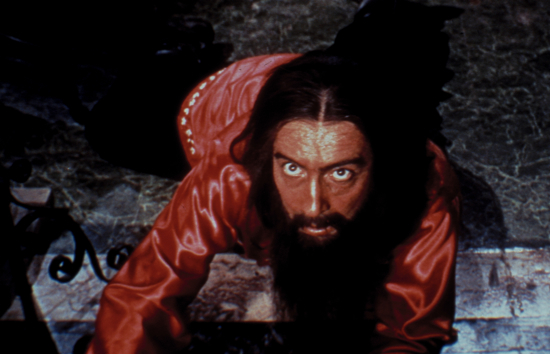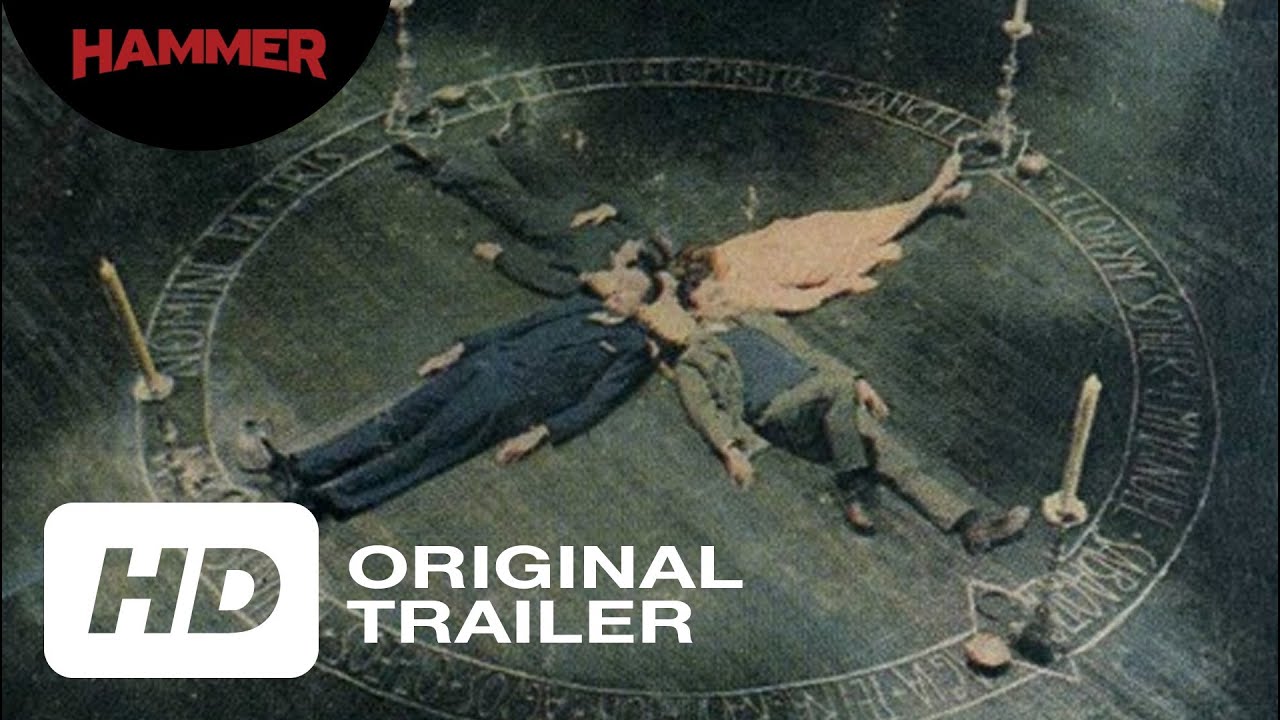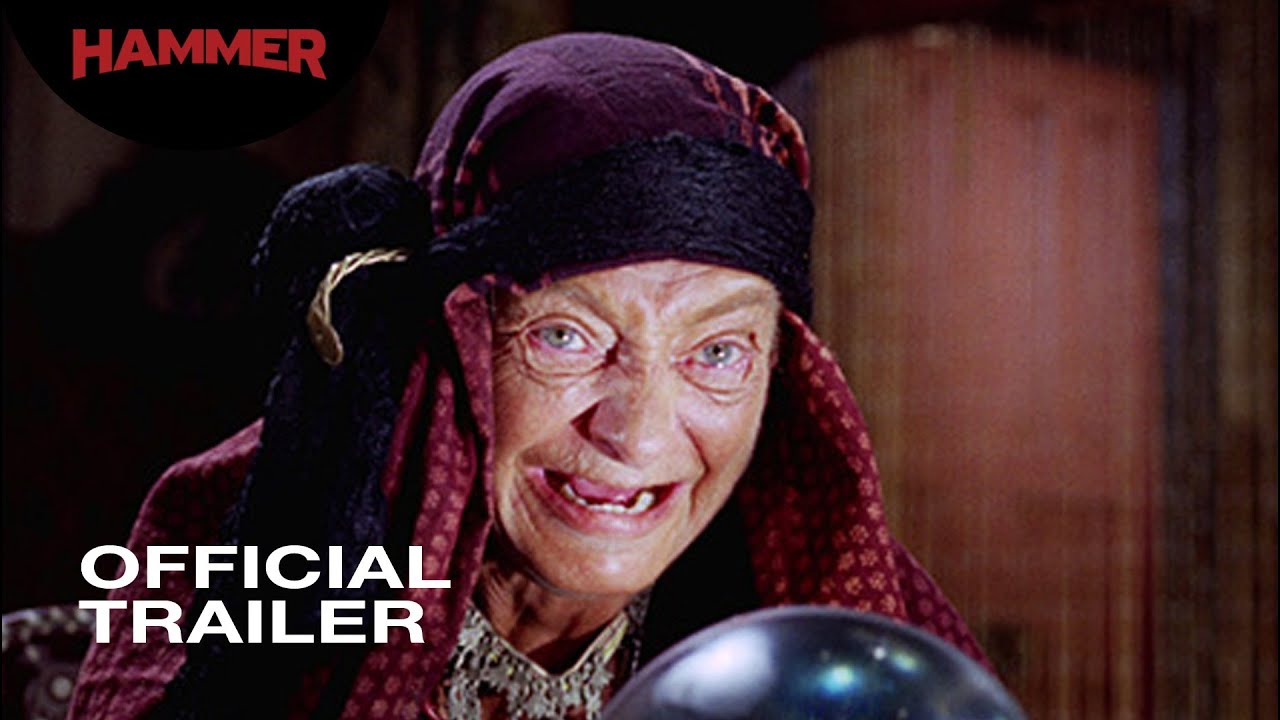Few names are as synonymous with horror cinema in general, but Hammer Horror in particular, as genre stalwarts Peter Cushing and Christopher Lee. Cushing, the elder of the two by some nine years, was almost always cast as the hero in his Hammer studio appearances, with a handful of notable exceptions but most memorably in Twins of Evil, a film that afforded him a rare opportunity to play a genuinely cruel and cold killer. Lee on the other hand was the ubiquitous villain of most of his pieces, rarely having the chance to display his chops as a stout protagonist, and less often still being able to appear without lashings of heavily applied makeup.
Even to children of the 1960s and ’70s Lee is most associated with the role of Dracula, one that he played in seven Hammer titles (and once again in a weak German take directed by Jess Franco, which is nevertheless worth a look thanks to Klaus Kinski’s turn as Renfield). This is despite the fact that his non-Hammer films were far more numerous throughout that period. Although not as prolific as Cushing with regard to the lesser British studios like Amicus and Tigon, Lee’s presence was much sought after by European studios, for whom he played co-protagonist alongside Cushing in uniquely un-British horror gems such as Horror Express. Most, however, were weak exploitative thrillers like Circus of Fear, in which Lee’s face is covered by a black mask throughout, or substandard period flicks such as the numerous and progressively worse Harry Alan Towers-produced Fu Manchu movies.
Following two final Dracula outings the twin apogees of Lee’s career would come in the 1970s. In 1973 he produced a sublime performance as Lord Summerisle in The Wicker Man and, one year later, was immortalised as the suave, superfluously nippled assassin Scaramanga in Bond film The Man with the Golden Gun. Deeply crap it may have been but, at that point in Lee’s already substantial career, it was the most widely viewed cinematic performance in his portfolio and positioned him as a part of what is still the longest running and second most successful franchise in cinema history – a full thirty years before he would also become an established part of both the Star Wars and Lord of the Rings sagas as Count Dooku and Saruman respectively. Despite the colossal shitness of the Star Wars prequels (not to mention the ridiculous name) that is some cinematic legacy.
It is, then, most fitting that the era of high-definition home cinema is affording cinephiles fresh opportunities to view more examples of this now 90 year old and still working British cinematic giant’s output, and two are included in StudioCanal’s latest triumvirate of Hammer films to receive Blu-ray upgrades.
The first and most interesting of the pair is Rasputin the Mad Monk (1966). Having largely exhausted the gothic horror pot by the mid-sixties Hammer had branched out into ill-judged historical epics about Viking princesses and scantily clad cave women. Rasputin… had a long gestation within the studio script offices but was finally pitched as a perfect vehicle for Christopher Lee to exploit the wild myths and conspiracy theories that revolved around the magnetically charismatic Russian figure. Although a more likely picture of Rasputin has emerged in recent years – that of an intelligent and politically very astute mover and shaker, who was in all likelihood tortured and murdered by British agents before he could negotiate a political truce between the Tsar of Russia and Germany – the story told by director Don Sharp and the tremendous cast is classic Hammer despite the lack of a supernatural bent. The production is lavish, the horror themes exploited effectively and the performances – particularly that of Lee, who as usual has to act from beneath a ton of makeup and fake hair – manage to be wonderfully inflated without spilling over into farce. Most impressively the Blu-ray is a massive improvement image-wise over the previous DVD release, ensuring that Sharp’s vivid and detailed photography displays textures and colours that previously lacked any clarity, plus production details and design that are probably only really visible for the first time since Rasputin the Mad Monk played in cinemas in the 1960s.
The same is true of The Devil Rides Out (1968), even if it does not quite live up to the vivid look and doom-laden pace of Rasputin the Mad Monk. Hammer’s adaptation of the Dennis Wheatley page-turner offered Lee a rare opportunity within the studio to play a hero, although much of the action is farmed out to his younger, phenomenally wooden and uncharismatic sidekick, played by opera singer Leon Greene (ignominiously dubbed by Patrick Allen). Once again the picture looks marvellous but, of the two, this is the film that feels very dated thanks partly to the awfully upper class and very British coven of Satanists headed by the silkily smug and dastardly Charles Gray (himself only a few years away from Bond villain immortality in Diamonds Are Forever). Nevertheless, Richard Matheson’s script is suitably dark for a tale of Satanic rituals and murderous sacrifices. Sadly the overall production fails to deliver on these nuances, or even bring the palpable sense of menace that director Terence Fisher’s other Hammer films like Dracula, The Gorgon or even The Earth Dies Screaming had managed. Part of the problem is the demands of the script outstripping the resources of a dwindling budget that, even as cameras rolled, continued to be stripped by producer Anthony Nelson Keys.
As in Rasputin…, Christopher Lee exudes an air of barely shackled power but here, as the Duc de Richleau, he is smart, dashing, restrained and aristocratic – whereas playing Rasputin he looks wild, fierce and on the verge of violence throughout. The two movies provide a contrasting look at Lee as a performer, as well as indicating the efforts of Hammer studios to exploit new directions for their horrific output in the late 1960s.
Hammer had hoped to kick-start a new franchise with The Devil Rides Out but, despite Wheatley’s enthusiastic approval of the result, it performed poorly at the US box office. It would be another eight years before the studio would revisit the author’s work with the deeply transitional (and only loosely inspired by the book) To the Devil a Daughter, also starring Lee but in a very different – and predictably villainous – role. On this occasion Wheatley was not impressed and declared that Hammer would no longer be permitted to adapt his novels. He needn’t have bothered, as they were already on a downhill slide, the gamble with a change of tone in To the Devil a Daughter having misfired. It was their final horror picture, and their second to last overall, before the studio gates closed for 29 years.
The third disc out this month does not feature Christopher Lee reprising his 1959 title role from The Mummy. Instead, his stunt double Eddie Powell donned the bandages for the third Hammer mummy flick, The Mummy’s Shroud (1967). There are however numerous studio stalwarts on show, chiefly in the forms of André Morell and Michael Ripper, as all manner of murderous shenanigans ensue thanks to a group of British explorers failing to learn from the experiences of their predecessors in Cairo and digging up a grumpy, revenge-obsessed mummy. The Mummy’s Shroud is Hammer by numbers but it is fun, atmospheric and one of the more violent entries in their catalogue. Like the previous two titles the Blu-ray transformation is marvellous.
Each release includes making of documentaries and an episode of the vintage World of Hammer series. In the case of The Devil Rides Out a featurette also highlights the restoration and technical tinkering processes used to clean up and enhance some of the shoddy original special effects work. Unfortunately, once seen, this has the tendency on viewing the film again to make some of the ‘improvements’ stick out rather egregiously.
StudioCanal and Hammer have produced three more excellent discs for fans of classic horror, although I do have some slight misgivings about the tampering with the flawed original effects shots in The Devil Rides Out. Qualms aside though, these three films, in conjunction with the previous releases, provide a great snapshot of the ‘state of Hammer’ from 1966 to ’68, when their move into the sideburns and Swinging London escapades of the Ralph Bates years was just around the corner.
Rasputin The Mad Monk, The Devil Rides Out and The Mummy’s Shroud will be released as Double Play Blu-ray/DVD editions on October 22.






